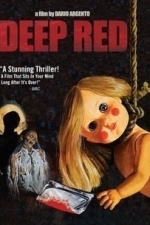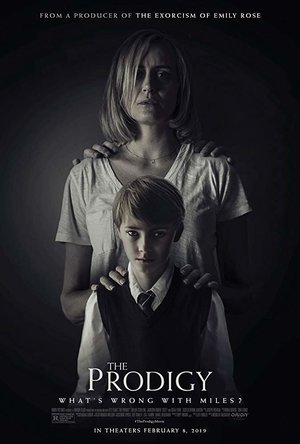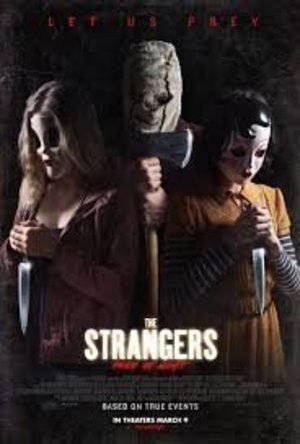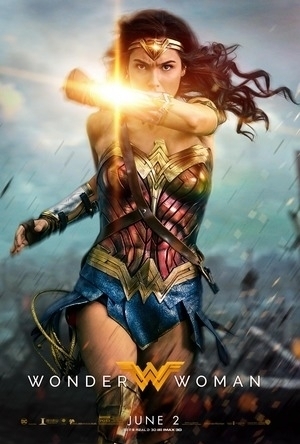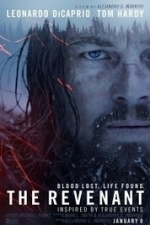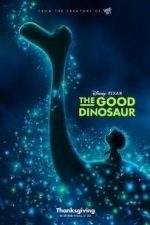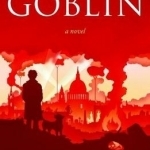Search
Search results

ECG Test - Challenge Your Interpreting Skills
Medical and Education
App
Test and improve your ECG interpreting skills with 1000+ samples in static images, and real-time...
Jesters_folly (230 KP) rated Deep Red (Profondo rosso) (1975) in Movies
Jul 19, 2021
Contains spoilers, click to show
Deep Red (aka Profondo rosso) is a thriller/slasher from Italian writer/director Dario Argento.
When Marcus Daly (David Hemmings) witnesses the murder of the women living in the flat below him he finds himself in a race to find the murderer before he becomes their next victim. The films killer follows a lot of what would become familiar tropes in slasher films, the killer is rarely seen and when they are seen they are covered u, they use a number of different ways to kill their victims and they have a habit of sneaking around. There isn't necessarily a a lot of blood from the kills, that is to say blood is sprayed around but when there is blood it is filmed in such a way that you can't miss it, in fact they eye is drawn to it.
Speaking of eyes there are a lot of them, Dario Argento has his own style of filming, he uses filters and strange camera angles and, in Deep Red a lot of closeups on eyes, sometimes just for scene transitions.
As well as being a Slasher, Deep Red is a mystery, as the film progresses Marcus the protagonist find clues as to the identity of the killer giving the viewer the chance to work out who it is as well. But there are red herrings and a lot of things that don't necessarily make sense. There is a clockwork boy, used only one by the killer, there is a creepy girl with a possibly mad farther, two facts that really don't affect the story.
As I said, Deep Red contains a lot of the Slasher tropes but it predates most of them, even beating Halloween by three years and so you can see that it has a big influence on the modern (well 80's so not so modern now) slashers.
The down side is that Deep Red is slow, there is a lot of talking, although contained in this are some clues as to the killers identity and the level of violence isn't quite as much as some of the more modern films, it does however beat some of it's slasher predecessors such as Psycho.
Over all Deep Red is a good film, slightly more mystery than slasher but with enough kills to keep a slasher fan happy. The story does plod along at is own pace but over all an enjoyable film.
When Marcus Daly (David Hemmings) witnesses the murder of the women living in the flat below him he finds himself in a race to find the murderer before he becomes their next victim. The films killer follows a lot of what would become familiar tropes in slasher films, the killer is rarely seen and when they are seen they are covered u, they use a number of different ways to kill their victims and they have a habit of sneaking around. There isn't necessarily a a lot of blood from the kills, that is to say blood is sprayed around but when there is blood it is filmed in such a way that you can't miss it, in fact they eye is drawn to it.
Speaking of eyes there are a lot of them, Dario Argento has his own style of filming, he uses filters and strange camera angles and, in Deep Red a lot of closeups on eyes, sometimes just for scene transitions.
As well as being a Slasher, Deep Red is a mystery, as the film progresses Marcus the protagonist find clues as to the identity of the killer giving the viewer the chance to work out who it is as well. But there are red herrings and a lot of things that don't necessarily make sense. There is a clockwork boy, used only one by the killer, there is a creepy girl with a possibly mad farther, two facts that really don't affect the story.
As I said, Deep Red contains a lot of the Slasher tropes but it predates most of them, even beating Halloween by three years and so you can see that it has a big influence on the modern (well 80's so not so modern now) slashers.
The down side is that Deep Red is slow, there is a lot of talking, although contained in this are some clues as to the killers identity and the level of violence isn't quite as much as some of the more modern films, it does however beat some of it's slasher predecessors such as Psycho.
Over all Deep Red is a good film, slightly more mystery than slasher but with enough kills to keep a slasher fan happy. The story does plod along at is own pace but over all an enjoyable film.
Kim Pook (101 KP) rated The Prodigy (2019) in Movies
Sep 25, 2020
Contains spoilers, click to show
A woman is seen running away from something or someone and ends up being almost hit by an elderly driver, we discover the woman has had her hand cut off, how did this happen? Why did it happen?
Forward to the present day and a pregnant woman is going into early labour, in between scenes of her giving birth we see this guy who gets shot down by police, he is holding a severed hand (remember the lady at the beginning?)....
Within months of baby Miles being born, his mother starts to notice strange things such as not crying during his shots and even saying words. It is put down to him being a genius. However, he is not really a genius at all he noticeably quite evil. This is evident when he squashes a bug in his bare hands at 5 years old, harms his babysitter at age 8, and starts speaking a strange language in his sleep.
One day Miles end up receiving psychiatric help after beating a child in his class with a wrench. Nobody can understand what's going on though and it seems Miles is hearing voices in his head and reacting to what they tell him to do. Miles' mother Sarah is eventually informed that Miles has a spirit living inside of him and that spirit is dangerous, Sarah refuses to believe this at first but after a disturbing situation happens at home she begins to believe that it must be true and after a series of events, finally gets him help to try and rid him of the evil inside of him.
I do find it shocking sometimes what they get young children to say in movies, but especially in this one. Considering the type of movie it is though its understandable and the boy who plays Miles does a fantastic job, down to the facial expressions, so you always know when it is Miles and when it's the spirit.
The movie very much reminds me of 'orphan' - another film with an evil adult/child. The ending was quite a bummer though and makes everything that happened in the movie a complete waste of time. It was interesting watching it unfold though and the end does leave it open for a sequel.
Forward to the present day and a pregnant woman is going into early labour, in between scenes of her giving birth we see this guy who gets shot down by police, he is holding a severed hand (remember the lady at the beginning?)....
Within months of baby Miles being born, his mother starts to notice strange things such as not crying during his shots and even saying words. It is put down to him being a genius. However, he is not really a genius at all he noticeably quite evil. This is evident when he squashes a bug in his bare hands at 5 years old, harms his babysitter at age 8, and starts speaking a strange language in his sleep.
One day Miles end up receiving psychiatric help after beating a child in his class with a wrench. Nobody can understand what's going on though and it seems Miles is hearing voices in his head and reacting to what they tell him to do. Miles' mother Sarah is eventually informed that Miles has a spirit living inside of him and that spirit is dangerous, Sarah refuses to believe this at first but after a disturbing situation happens at home she begins to believe that it must be true and after a series of events, finally gets him help to try and rid him of the evil inside of him.
I do find it shocking sometimes what they get young children to say in movies, but especially in this one. Considering the type of movie it is though its understandable and the boy who plays Miles does a fantastic job, down to the facial expressions, so you always know when it is Miles and when it's the spirit.
The movie very much reminds me of 'orphan' - another film with an evil adult/child. The ending was quite a bummer though and makes everything that happened in the movie a complete waste of time. It was interesting watching it unfold though and the end does leave it open for a sequel.

Solar Walk Lite - Planetarium 3D: Planets, Satelli
Reference and Education
App
Solar Walk Lite is a great astronomy application that turns your device into an interactive...

Speed Anatomy (Quiz)
Education and Games
App
How fast can you point to your liver, gall bladder or incisor? Do you know the difference between...
Piper (13 KP) rated Strangers: Prey at Night (2018) in Movies
Nov 27, 2019
Real-feeling Characters (2 more)
Escalating Tension
Some Excellent Scenes
Some Naff Shots (1 more)
Hammy Acting
Contains spoilers, click to show
I’ve heard a lot of trash about this movie, and only some of it is right. Don’t get me wrong - it has its downfalls. We’ll get to those. But it’s a genuinely fun horror movie and, considering the predictability of the slasher genre, it’s fairly terrifying: the suspense doesn’t let up from damn near the beginning. For full disclosure, I haven’t seen the original Strangers movie, and I’ve heard it’s a whole lot better than this 2018 sequel. But the fact that Prey at Night stands successfully alone as a movie means it doesn’t matter which order you watch them in - all I’d say is that it’s probably best not to pay much attention to the reviews on this one (as sefl-destructive as a comment like that might be). It’s impressive in its own right, and if this apparently-subpar sequel is anything to go by, the original must be worthwhile. I’ll let you know once I’ve actually seen it.
Now, onto the juicy stuff. There really isn’t a whole lot of bad to this movie, and what there is is fairly standard for modern horror movies. The plot is fairly predictable: people with knives hunt down people without (the good guys do have a single gun between them, and in a display that makes you genuinely shout at your television it never gets used); a dysfunctional American family gets torn completely apart; every single time you think the evil nasty villain man is dead, he stands up, just a little out of our good guy’s eyeline. It’s fairly repetitive - how much story can you get out of some knives and masks and a little bit of running? - and while it nicely strays from the standard twisty ending, there’s a hint of danger at the end that a) doesn’t make sense, b) doesn’t mean anything, and c) isn’t explored or explained so falls very short of what it’s trying to do. And that’s nearly all the bad out of the way, but I’d like to give an honourable mention to some very corny Raimi-esque camera zooms that, momentarily, take the viewer completely out of the film and just look terrible.
Having said that, most of the camerawork is good - shaky where it needs to be, dead straight when it works. There are some claustrophobic close-ups that leave you wondering just what the director’s hiding out of frame. And while watching a creepily-masked figure loom silently into frame can get a little less scary every time, it’s certainly well-shot. Despite the pitfalls, most of which are just so easy to slip into, the good parts to this movie mostly fall into the categories of character work and nice, understated gore. The bloody parts are suitably bloody, but they don’t become unrealistic. In fact, there are gory moments that seem meticulously well-crafted and you can almost feel the pain. The characters are annoying at times, they all have their own quirks and tightly-wound baggage, and there are places where their obviously set-up arcs just don’t get the resolution they need - hang on, why do I think this is a good film?
Here’s why. Because it’s real. People don’t always get resolution (okay, it isn’t always because one of the conflicting characters dies about five minutes into the experience, but we don’t always get closure, we don’t always get to fix relationships before it’s too late). The characters in this film are, despite everything, quite likeable once you get to know them, and there’s a truly heartbreaking moment fairly early on that can’t be shunned. The injuries these characters sustain throughout don’t just go away - they stick around, for the most part, slow them down, make them vulnerable. The setting is unassuming until you realise this family are literally the only characters in the film that aren’t dead (and quite beautifully mutilated) or wielding a knife/axe/pickup truck - and if you dare make the connection between a spooky trailer park and a certain Camp Crystal Lake, it makes sense. The slashers themselves are fairly unoriginal (I’m really trying not to stray into the negatives again) but they’re human. They can die. Their motives are revealed in a simple, nicely-put “Why not?” and it’s clear they don’t need a reason, this is just fun for them. The masks, obviously, add a little layer of creep, and there’s a swimming pool scene that really is quite beautifully done. Watching people get murdered to a corny, cheerful eighties soundtrack might get irritating, if it wasn’t established that that’s just a chilling preference of the primary slasher character. The popping-up-out-of-nowhere gimmick might get a little annoying if it wasn’t established that really, this is just that kind of movie. The fact that we never find out what Kenzie did to get her shipped off to boarding school, or who Tamara was (should I have seen the first movie? I’ll have to watch it soon or I just might be lambasted for my ignorance) didn't put us too out-of-place, because there are enough wonderful gore and inventive set-piece-driven slasher moments to remind you that, hang on, you don't really need to know. The tension builds, and it builds, and oh it keeps on building right until the end, and it’s the one thing about this film that's masterfully done.
At the end of the day, this isn’t a great movie. It’s certainly not perfect. But it’s good. It feels real, and it feels, in places, genuinely terrifying. It’s a fun watch and it hasn’t been ridiculously drawn-out like some recent films (I’m looking at you, Chapter Two) so it’s quick, it’s choppy, and there’s a half-decent scare every now and then. Will it scar you for life? Depends how you feel about Kim Wilde.
Now, onto the juicy stuff. There really isn’t a whole lot of bad to this movie, and what there is is fairly standard for modern horror movies. The plot is fairly predictable: people with knives hunt down people without (the good guys do have a single gun between them, and in a display that makes you genuinely shout at your television it never gets used); a dysfunctional American family gets torn completely apart; every single time you think the evil nasty villain man is dead, he stands up, just a little out of our good guy’s eyeline. It’s fairly repetitive - how much story can you get out of some knives and masks and a little bit of running? - and while it nicely strays from the standard twisty ending, there’s a hint of danger at the end that a) doesn’t make sense, b) doesn’t mean anything, and c) isn’t explored or explained so falls very short of what it’s trying to do. And that’s nearly all the bad out of the way, but I’d like to give an honourable mention to some very corny Raimi-esque camera zooms that, momentarily, take the viewer completely out of the film and just look terrible.
Having said that, most of the camerawork is good - shaky where it needs to be, dead straight when it works. There are some claustrophobic close-ups that leave you wondering just what the director’s hiding out of frame. And while watching a creepily-masked figure loom silently into frame can get a little less scary every time, it’s certainly well-shot. Despite the pitfalls, most of which are just so easy to slip into, the good parts to this movie mostly fall into the categories of character work and nice, understated gore. The bloody parts are suitably bloody, but they don’t become unrealistic. In fact, there are gory moments that seem meticulously well-crafted and you can almost feel the pain. The characters are annoying at times, they all have their own quirks and tightly-wound baggage, and there are places where their obviously set-up arcs just don’t get the resolution they need - hang on, why do I think this is a good film?
Here’s why. Because it’s real. People don’t always get resolution (okay, it isn’t always because one of the conflicting characters dies about five minutes into the experience, but we don’t always get closure, we don’t always get to fix relationships before it’s too late). The characters in this film are, despite everything, quite likeable once you get to know them, and there’s a truly heartbreaking moment fairly early on that can’t be shunned. The injuries these characters sustain throughout don’t just go away - they stick around, for the most part, slow them down, make them vulnerable. The setting is unassuming until you realise this family are literally the only characters in the film that aren’t dead (and quite beautifully mutilated) or wielding a knife/axe/pickup truck - and if you dare make the connection between a spooky trailer park and a certain Camp Crystal Lake, it makes sense. The slashers themselves are fairly unoriginal (I’m really trying not to stray into the negatives again) but they’re human. They can die. Their motives are revealed in a simple, nicely-put “Why not?” and it’s clear they don’t need a reason, this is just fun for them. The masks, obviously, add a little layer of creep, and there’s a swimming pool scene that really is quite beautifully done. Watching people get murdered to a corny, cheerful eighties soundtrack might get irritating, if it wasn’t established that that’s just a chilling preference of the primary slasher character. The popping-up-out-of-nowhere gimmick might get a little annoying if it wasn’t established that really, this is just that kind of movie. The fact that we never find out what Kenzie did to get her shipped off to boarding school, or who Tamara was (should I have seen the first movie? I’ll have to watch it soon or I just might be lambasted for my ignorance) didn't put us too out-of-place, because there are enough wonderful gore and inventive set-piece-driven slasher moments to remind you that, hang on, you don't really need to know. The tension builds, and it builds, and oh it keeps on building right until the end, and it’s the one thing about this film that's masterfully done.
At the end of the day, this isn’t a great movie. It’s certainly not perfect. But it’s good. It feels real, and it feels, in places, genuinely terrifying. It’s a fun watch and it hasn’t been ridiculously drawn-out like some recent films (I’m looking at you, Chapter Two) so it’s quick, it’s choppy, and there’s a half-decent scare every now and then. Will it scar you for life? Depends how you feel about Kim Wilde.
Bob Mann (459 KP) rated Wonder Woman (2017) in Movies
Sep 29, 2021
“What first attracted you Dr Mann to the movie with the scantily-clad Amazonians?”
Amazonians deliver! And how. The much anticipated new Wonder Woman movie is with us, and for once the film lives up to the wall-to-wall marketing hype.
With a heavy dose of mythology, Diana is growing up as the cossetted daughter of Hippolyta (Connie Nielsen, “Gladiator”), the Queen of the Amazons, on the hidden paradise island of Themyscira. Trained up as a warrior by Hippolyta’s sister, General Antiope (Robin Wright of “House of Cards”), Diana is clearly something special. Her ego is reinforced by the knowledge that she was made of clay with life breathed into her by the God Zeus. It’s enough to turn a girl’s head!
It’s 1917 and the man-free paradise is shaken up when an American spy by the name of Steve Trevor (Chris Pine, “Star Trek: Beyond“) crash-lands in the waters off Themyscira. (And yes… you didn’t mishear me… this film genuinely features a hero with both the names “Steve” and ‘Trevor”). Prince Eric – no, sorry, wrong film – is saved and awakened on the beach by Diana as the others arrive. “Thank God!”, say the Amazonians. “At last, someone to process the 200 year backlog of washing and ironing”!
But Steve (an “above average specimen”, LOL) is not long for paradise as he needs to return to the war with the results of his spy-work: a chemistry book stolen from the gorgeously deformed Dr Maru (Elena Anaya), gas-developer for the evil General Ludendorff (Danny Huston). Seeing Ludendorff to be her God-like nemesis Ares, Diana returns with Steve to the WW1 battlefields with the intent of killing the God of War and so ending the ‘war to end all wars’.
Much ‘fish out of water’ fun is had with Diana meeting civilised London society, although perhaps this section of the film doesn’t quite live up to its full potential: having ice cream for the first time, without any sign of surprise, all she can come up with is an amusing but rather lame “You must be very proud”.
But where the film really accelerates into awesomeness is when Diana reaches ‘The Front’. She emerges from the trenches like some shimmering vision of hotness, to set male and lesbian hearts a flutter. Its the most memorable trench-exit since the finale of “Black Adder 4”, and the subsequent scenes of Diana single-handedly facing the German guns is for me one of the most compelling and enjoyable scenes in any recent DC or Marvel movie.
Holding all this together is the ex-Israeli army-trainer Gal Gadot in the title role. And man oh man, what a Gal! Statuesque, athletic but also sweet, charming and emotionally fragile she completely owns this role from beginning to end. Gadot made a memorable entry in the otherwise poor “Batman v Superman: Dawn of Justice” (#marthagate #neverforget #neverforgive) but nothing prepares you for just how great she is in this outing. In fact, I’ll go as far as saying that this film, although having a UK 12 certificate, is a film of immense danger to heterosexual teenagers of any age (#humor):
All boys will be cast into a lifetime of misery, never able to find a woman that can possibly live up to the impossibly perfect vision of Diana Prince, tearing up the German army with fists and whip!;
All girls WILL BECOME LESBIANS AFTER WATCHING THIS FILM!
Parents: you have been warned! 🙂
Chris Pine – the thinking women’s Chris Pratt – once again proves himself as a talented actor who manages to successfully morph to inhabit the role he plays. Much as he did in the excellent “Hell or High Water“, not once did I equate him to be James Tiberius Kirk after the first 5 minutes.
Effective in supporting roles are David Thewlis (“Harry Potter”) as a ‘helpful’ army bod and an almost unrecognisable Lucy Davis (“The Office”) as Etta, Steve’s comedic secretary. Steve’s rather unlikely sidekicks of Sameer (Said Taghmaoui, “American Hustle“), Charlie (Ewen Bremner, “Trainspotting”) and ‘The Chief’ (Eugene Brave Rock “The Revenant“) all rather fade into the woodwork by comparison.
I saw the film in 3D (“careful now… you could take an eye out with those things”) and very good it was too. Aside from some rather unnecessary Amazonian arrows, its never feels overdone, and elements of it were extremely effective.
Another star of the show is the superb Wonder Woman theme by Hans Zimmer, here rolled out by the film’s composer Rupert Gregson-Williams (“Hacksaw Ridge“). Unfortunately, the rest of the soundtrack is not particularly memorable.
The film shifts into more traditional yawn-worthy ‘superhero finale’ mode in the last twenty minutes, which is a bit of a shame. It’s also really curious that for such a sexually charged film there is an almost complete absence of ‘lurrve’ on show. The one love scene coquettishly fades to a view of the outside window. Was this to protect the film’s family friendly rating (probably) or that the director didn’t want to show her heroine in a remotely submissive position (possibly)? More frustratingly, the morning after there is no mention of it at all! (“Move along, nothing to see here”). I at least wanted some sort of recognition that a human/God liaison had taken place: Steve grimacing a bit when he sits down; or Diana on the blower to Themyscira saying “Yes, you were right Mum. 5 minutes in, and it just snapped clean off!”
I know my friend David Moody (of markanddave vblog fame, and a big DC/Marvel fan) was generally disappointed with the film. Conversely, Amy Andrews from the ever-excellent Oh That Film Blog loved it. I’m with Amy on this one, and greatly enjoyed it as a well-constructed action rollercoaster. The nearly two and a half hours sped by. By the way (and I took one for the team here) there is no “monkey” at the end of the film’s credit to hang on for.
Patty Jenkins (“Monster”) directs and knows the audience she is aiming to please. One can only imagine the empowering impact this film will have on young girls, crossing their wrists to ‘THAT’ music and, in their imagination, casting terrorists into the hell that they should be consigned to. In this week of yet more Isis atrocity in London, Wonder Woman is a role-model we could all stand and salute: “I believe in love” too.
With a heavy dose of mythology, Diana is growing up as the cossetted daughter of Hippolyta (Connie Nielsen, “Gladiator”), the Queen of the Amazons, on the hidden paradise island of Themyscira. Trained up as a warrior by Hippolyta’s sister, General Antiope (Robin Wright of “House of Cards”), Diana is clearly something special. Her ego is reinforced by the knowledge that she was made of clay with life breathed into her by the God Zeus. It’s enough to turn a girl’s head!
It’s 1917 and the man-free paradise is shaken up when an American spy by the name of Steve Trevor (Chris Pine, “Star Trek: Beyond“) crash-lands in the waters off Themyscira. (And yes… you didn’t mishear me… this film genuinely features a hero with both the names “Steve” and ‘Trevor”). Prince Eric – no, sorry, wrong film – is saved and awakened on the beach by Diana as the others arrive. “Thank God!”, say the Amazonians. “At last, someone to process the 200 year backlog of washing and ironing”!
But Steve (an “above average specimen”, LOL) is not long for paradise as he needs to return to the war with the results of his spy-work: a chemistry book stolen from the gorgeously deformed Dr Maru (Elena Anaya), gas-developer for the evil General Ludendorff (Danny Huston). Seeing Ludendorff to be her God-like nemesis Ares, Diana returns with Steve to the WW1 battlefields with the intent of killing the God of War and so ending the ‘war to end all wars’.
Much ‘fish out of water’ fun is had with Diana meeting civilised London society, although perhaps this section of the film doesn’t quite live up to its full potential: having ice cream for the first time, without any sign of surprise, all she can come up with is an amusing but rather lame “You must be very proud”.
But where the film really accelerates into awesomeness is when Diana reaches ‘The Front’. She emerges from the trenches like some shimmering vision of hotness, to set male and lesbian hearts a flutter. Its the most memorable trench-exit since the finale of “Black Adder 4”, and the subsequent scenes of Diana single-handedly facing the German guns is for me one of the most compelling and enjoyable scenes in any recent DC or Marvel movie.
Holding all this together is the ex-Israeli army-trainer Gal Gadot in the title role. And man oh man, what a Gal! Statuesque, athletic but also sweet, charming and emotionally fragile she completely owns this role from beginning to end. Gadot made a memorable entry in the otherwise poor “Batman v Superman: Dawn of Justice” (#marthagate #neverforget #neverforgive) but nothing prepares you for just how great she is in this outing. In fact, I’ll go as far as saying that this film, although having a UK 12 certificate, is a film of immense danger to heterosexual teenagers of any age (#humor):
All boys will be cast into a lifetime of misery, never able to find a woman that can possibly live up to the impossibly perfect vision of Diana Prince, tearing up the German army with fists and whip!;
All girls WILL BECOME LESBIANS AFTER WATCHING THIS FILM!
Parents: you have been warned! 🙂
Chris Pine – the thinking women’s Chris Pratt – once again proves himself as a talented actor who manages to successfully morph to inhabit the role he plays. Much as he did in the excellent “Hell or High Water“, not once did I equate him to be James Tiberius Kirk after the first 5 minutes.
Effective in supporting roles are David Thewlis (“Harry Potter”) as a ‘helpful’ army bod and an almost unrecognisable Lucy Davis (“The Office”) as Etta, Steve’s comedic secretary. Steve’s rather unlikely sidekicks of Sameer (Said Taghmaoui, “American Hustle“), Charlie (Ewen Bremner, “Trainspotting”) and ‘The Chief’ (Eugene Brave Rock “The Revenant“) all rather fade into the woodwork by comparison.
I saw the film in 3D (“careful now… you could take an eye out with those things”) and very good it was too. Aside from some rather unnecessary Amazonian arrows, its never feels overdone, and elements of it were extremely effective.
Another star of the show is the superb Wonder Woman theme by Hans Zimmer, here rolled out by the film’s composer Rupert Gregson-Williams (“Hacksaw Ridge“). Unfortunately, the rest of the soundtrack is not particularly memorable.
The film shifts into more traditional yawn-worthy ‘superhero finale’ mode in the last twenty minutes, which is a bit of a shame. It’s also really curious that for such a sexually charged film there is an almost complete absence of ‘lurrve’ on show. The one love scene coquettishly fades to a view of the outside window. Was this to protect the film’s family friendly rating (probably) or that the director didn’t want to show her heroine in a remotely submissive position (possibly)? More frustratingly, the morning after there is no mention of it at all! (“Move along, nothing to see here”). I at least wanted some sort of recognition that a human/God liaison had taken place: Steve grimacing a bit when he sits down; or Diana on the blower to Themyscira saying “Yes, you were right Mum. 5 minutes in, and it just snapped clean off!”
I know my friend David Moody (of markanddave vblog fame, and a big DC/Marvel fan) was generally disappointed with the film. Conversely, Amy Andrews from the ever-excellent Oh That Film Blog loved it. I’m with Amy on this one, and greatly enjoyed it as a well-constructed action rollercoaster. The nearly two and a half hours sped by. By the way (and I took one for the team here) there is no “monkey” at the end of the film’s credit to hang on for.
Patty Jenkins (“Monster”) directs and knows the audience she is aiming to please. One can only imagine the empowering impact this film will have on young girls, crossing their wrists to ‘THAT’ music and, in their imagination, casting terrorists into the hell that they should be consigned to. In this week of yet more Isis atrocity in London, Wonder Woman is a role-model we could all stand and salute: “I believe in love” too.
Movie Metropolis (309 KP) rated The Revenant (2015) in Movies
Jun 11, 2019
Typical Oscar Fodder
There are two types of film critic when it comes to the Academy Awards. Those who enjoy the glamour that the Oscars bring every spring and those who despise what the awards mean for film. I’m in the latter camp, I find them out of touch with what movie-watching audiences enjoy and feel an overhaul is necessary to reflect that.
That’s not to say the Oscars reward bad films of course. Not at all. I do feel however that they, on the whole, reward technical brilliance, rather than the deeper aspects of movie-making and forget to include mass-market crowd-pleasers for fear of cheapening the ceremony.
The film everyone is talking about this year is The Revenant. With an incredible 12 nominations, it’s the one to watch in 2016. But is it actually any good?
With Birdman director Alejandro G. Iñárritu at the helm, it promises more of the exceptional performances and technical perfection he brought to that film, and that’s exactly what you get.
Leonardo DiCaprio, nominated for yet another Academy Award, stars as Hugh Glass, a hunter left for dead by his supposed comrades after a vicious bear attack leaves him gravely injured. He is supported by man-of-the-moment Tom Hardy, nominated for a Best Supporting Actor award, and British rising star Will Poulter (The Maze Runner).
DiCaprio’s Glass is a commanding presence throughout The Revenant as he tracks down those who betrayed him. With little English dialogue, it’s impressive that he is able to convey such emotion, but he does so perfectly. He’s certainly worthy of his Oscar nod, but whether or not he will be fifth time lucky remains to be seen.
Elsewhere, the cinematography that Iñárritu uses is nothing short of breath-taking. Beautiful lingering shots of snow-capped mountains, icy waterfalls and baron forests all make for a documentary-level of awe and it’s here where the film succeeds the most.
Unfortunately, the rest of The Revenant falls a little flat. The story is incredibly pedestrian considering the film’s 156 minute running time and whilst the cast are all excellent, the material is a little staid ranging from the ordinary, to the bizarre. One scene in particular had me remembering The Empire Strikes Back of all films.
The intriguing plot that Iñárritu brought to Birdman is nowhere to be seen here and as the film reaches its mightily predictable conclusion, it runs out of steam. There’s only so much landscape, however beautiful, that you can throw at an audience.
Overall, The Revenant is a technical masterpiece, flanked by impressive performances from Leonardo DiCaprio and Will Poulter in particular, but the story just isn’t there. It may have a dozen award nominations to its name, but in this case, it’s nothing more than style over substance.
https://moviemetropolis.net/2016/01/17/typical-oscar-fodder-the-revenant-review/
That’s not to say the Oscars reward bad films of course. Not at all. I do feel however that they, on the whole, reward technical brilliance, rather than the deeper aspects of movie-making and forget to include mass-market crowd-pleasers for fear of cheapening the ceremony.
The film everyone is talking about this year is The Revenant. With an incredible 12 nominations, it’s the one to watch in 2016. But is it actually any good?
With Birdman director Alejandro G. Iñárritu at the helm, it promises more of the exceptional performances and technical perfection he brought to that film, and that’s exactly what you get.
Leonardo DiCaprio, nominated for yet another Academy Award, stars as Hugh Glass, a hunter left for dead by his supposed comrades after a vicious bear attack leaves him gravely injured. He is supported by man-of-the-moment Tom Hardy, nominated for a Best Supporting Actor award, and British rising star Will Poulter (The Maze Runner).
DiCaprio’s Glass is a commanding presence throughout The Revenant as he tracks down those who betrayed him. With little English dialogue, it’s impressive that he is able to convey such emotion, but he does so perfectly. He’s certainly worthy of his Oscar nod, but whether or not he will be fifth time lucky remains to be seen.
Elsewhere, the cinematography that Iñárritu uses is nothing short of breath-taking. Beautiful lingering shots of snow-capped mountains, icy waterfalls and baron forests all make for a documentary-level of awe and it’s here where the film succeeds the most.
Unfortunately, the rest of The Revenant falls a little flat. The story is incredibly pedestrian considering the film’s 156 minute running time and whilst the cast are all excellent, the material is a little staid ranging from the ordinary, to the bizarre. One scene in particular had me remembering The Empire Strikes Back of all films.
The intriguing plot that Iñárritu brought to Birdman is nowhere to be seen here and as the film reaches its mightily predictable conclusion, it runs out of steam. There’s only so much landscape, however beautiful, that you can throw at an audience.
Overall, The Revenant is a technical masterpiece, flanked by impressive performances from Leonardo DiCaprio and Will Poulter in particular, but the story just isn’t there. It may have a dozen award nominations to its name, but in this case, it’s nothing more than style over substance.
https://moviemetropolis.net/2016/01/17/typical-oscar-fodder-the-revenant-review/
Gareth von Kallenbach (980 KP) rated The Good Dinosaur (2015) in Movies
Jun 19, 2019
Over the years dinosaurs have often been portrayed as lumbering oafs, vicious killers, or cuddly playthings. With the reinvigorated “Jurassic” franchise interest in the creatures is at an all-time high. Disney/PIXAR are hoping this interest translates into box office gold with the release of their new film “The Good Dinosaur” which looks to continue the successful and award winning streak of their earlier efforts.
We first heard of the film almost 4 years ago at the D23 Expo when during the upcoming film showcase it was announced that they had a dinosaur themed project in the works but had little else to say about it at that time. The premise of the film is that the asteroid that is rumored to have led to the extinction of the dinosaurs actually missed the earth and millions of years later, dinosaurs continue to evolve.
We meet a family of peaceful dinosaurs who spend their days working in the fields as farmers preparing for the upcoming winter season and the birth of their three children. One of the children named Arlo (Raymond Ochoa) is rather diminutive and tentative and unlike his bigger brother and sister, struggles to master his fear and find a role in which he can excel.
When fate and disaster step in, Arlo finds himself alone and isolated in the strange and dangerous world, forced to make a journey home. Along the way he discover shimself and learn several life lessons in the process. Along the way he makes new friends and staves off threats, all with the help of a new companion, a feral human named Spot. As any fans of Disney/Pixar will tell you the sidekick is often heartwarming comic gold.
While the film follows a very tried-and-true plot line for Disney films with elements of several other Disney classics incorporated within its framework, it does boast some absolutely amazing animation which include some captivating and breathtaking landscapes.
My biggest issues with the film was that I felt I had seen this story several times before in other films by the studio and that while enjoyable and at times heartbreaking, it felt a little too formulaic and did not resonate with me the way that many of their past films had. Parents may want to be cautioned that the film does contain some scary moments and there were a couple of children during our screener who did seem to be a bit disturbed by elements the film although most of those in attendance were captivated and entertained throughout and left the theater howling like wolves.
While I’m not sure the film will be a true modern classic that we have come to expect from the studio, it is still a very enjoyable and entertaining film that will be more than welcome during the holiday season for those looking for some dependable Pixar magic.
http://sknr.net/2015/11/24/the-good-dinosaur/
We first heard of the film almost 4 years ago at the D23 Expo when during the upcoming film showcase it was announced that they had a dinosaur themed project in the works but had little else to say about it at that time. The premise of the film is that the asteroid that is rumored to have led to the extinction of the dinosaurs actually missed the earth and millions of years later, dinosaurs continue to evolve.
We meet a family of peaceful dinosaurs who spend their days working in the fields as farmers preparing for the upcoming winter season and the birth of their three children. One of the children named Arlo (Raymond Ochoa) is rather diminutive and tentative and unlike his bigger brother and sister, struggles to master his fear and find a role in which he can excel.
When fate and disaster step in, Arlo finds himself alone and isolated in the strange and dangerous world, forced to make a journey home. Along the way he discover shimself and learn several life lessons in the process. Along the way he makes new friends and staves off threats, all with the help of a new companion, a feral human named Spot. As any fans of Disney/Pixar will tell you the sidekick is often heartwarming comic gold.
While the film follows a very tried-and-true plot line for Disney films with elements of several other Disney classics incorporated within its framework, it does boast some absolutely amazing animation which include some captivating and breathtaking landscapes.
My biggest issues with the film was that I felt I had seen this story several times before in other films by the studio and that while enjoyable and at times heartbreaking, it felt a little too formulaic and did not resonate with me the way that many of their past films had. Parents may want to be cautioned that the film does contain some scary moments and there were a couple of children during our screener who did seem to be a bit disturbed by elements the film although most of those in attendance were captivated and entertained throughout and left the theater howling like wolves.
While I’m not sure the film will be a true modern classic that we have come to expect from the studio, it is still a very enjoyable and entertaining film that will be more than welcome during the holiday season for those looking for some dependable Pixar magic.
http://sknr.net/2015/11/24/the-good-dinosaur/
Eilidh G Clark (177 KP) rated Goblin in Books
Jul 2, 2019
Brilliant book, well wriiten, original
Winner of the Saltire Society first book of the year award 2017, Goblin, by Ever Dundas is a brilliant and brave first novel. Set in both London during WW2 and in Edinburgh in 2011, the story is told in flashback. For me, the first half of the novel is the best, we meet Goblin as a nine-year-old tomboy with a love for animals and a passion for storytelling - both of which the protagonist collects.
Goblin has a difficult family life; a mother who doesn’t want her, 'Goblin-runt born blue. Nothing can kill you. [...] You're like a cockroach,' (p.5) a father who mends radio’s and barely talks and a brother (David) who spends most of his time in his bedroom. Left to her own devices, the protagonist, her dog Devil, and her two friends Mac and Stevie roam the neighbourhood and hang around in an abandoned worksite. As a collector of stories, Goblin enthusiastically attends the local church with Mac, 'I loved the stories, turning them over in my head, weaving my own.' (p.24) before meeting The Crazy Pigeon Lady who tells her tales of Lizards people from the realm below. The childhood innocence in these chapters, mixed with magic realism, break down the walls of adult reasoning and creates a wonderful suspension of disbelief.
But without giving away the story plot, the suspension of disbelief serves another purpose; to divert the reader (as well as the adult protagonist) from the truth. So, while the adult Goblin searches amongst her tangled past, she takes the reader along for the ride. We meet multiple parents, live life on the road, come alive on the streets and in the circus, explore love, death, desire, and hate – and somewhere in the middle we meet an impressive collection of animals - Goblin has it all. And as far as strong female protagonists go, she’s right up there with Anais Hendricks from Jenni Fagan’s Panopticon, to Janie Ryan in Kerry Hudson’s Tony Hogan Bought Me an Ice Cream Float Before He Stole My Ma, characters who are so real you might just walk by them on the street.
The only teeny tiny criticism about the novel is that the second half spans over a lengthy period of time and it felt a little rushed. However, there is so much to say about this novel, so many angles to discuss, from Queer Theory to Religion, from Myth to Realism, and as a graduate of English Literature I could have a field day studying this book but for now, as a lover of good books, I’ll give it a big thumbs up and a huge recommendation, it’ll be finding a space on my ‘keep’ book shelve.
Goblin, Ever Dundas (2017) published by Saraband
Goblin has a difficult family life; a mother who doesn’t want her, 'Goblin-runt born blue. Nothing can kill you. [...] You're like a cockroach,' (p.5) a father who mends radio’s and barely talks and a brother (David) who spends most of his time in his bedroom. Left to her own devices, the protagonist, her dog Devil, and her two friends Mac and Stevie roam the neighbourhood and hang around in an abandoned worksite. As a collector of stories, Goblin enthusiastically attends the local church with Mac, 'I loved the stories, turning them over in my head, weaving my own.' (p.24) before meeting The Crazy Pigeon Lady who tells her tales of Lizards people from the realm below. The childhood innocence in these chapters, mixed with magic realism, break down the walls of adult reasoning and creates a wonderful suspension of disbelief.
But without giving away the story plot, the suspension of disbelief serves another purpose; to divert the reader (as well as the adult protagonist) from the truth. So, while the adult Goblin searches amongst her tangled past, she takes the reader along for the ride. We meet multiple parents, live life on the road, come alive on the streets and in the circus, explore love, death, desire, and hate – and somewhere in the middle we meet an impressive collection of animals - Goblin has it all. And as far as strong female protagonists go, she’s right up there with Anais Hendricks from Jenni Fagan’s Panopticon, to Janie Ryan in Kerry Hudson’s Tony Hogan Bought Me an Ice Cream Float Before He Stole My Ma, characters who are so real you might just walk by them on the street.
The only teeny tiny criticism about the novel is that the second half spans over a lengthy period of time and it felt a little rushed. However, there is so much to say about this novel, so many angles to discuss, from Queer Theory to Religion, from Myth to Realism, and as a graduate of English Literature I could have a field day studying this book but for now, as a lover of good books, I’ll give it a big thumbs up and a huge recommendation, it’ll be finding a space on my ‘keep’ book shelve.
Goblin, Ever Dundas (2017) published by Saraband
